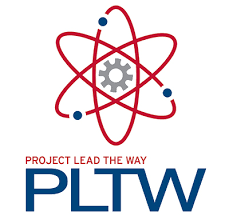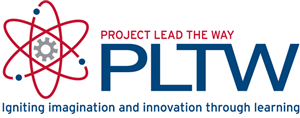- Stranahan High School
- School of STEM

School of Science, Technology, Engineering, and Mathematics
-
The acronym STEM is fairly specific in nature referring to science, technology, engineering and mathematics; however, the concept of STEM encompasses much more than the sum of its parts. Workers in STEM occupations use science and math to solve problems and drive our nation's innovation and competitiveness by generating new ideas, new companies and new industries. STEM programs of study are typically classified based upon four occupational clusters: computer technology; mathematical sciences; engineering and surveying; and natural, physical and life sciences. STEM programs in Florida's Public Schools must embrace the integration of technology and engineering in science and mathematics.
STEM Programs include the following features:
- A curriculum driven by problem-solving, discovery and exploratory learning that requires students to actively engage a situation in order to find its solution.
- Nature of technology; engineering design; and systems thinking, maintenance and troubleshooting incorporated into the science and mathematics curricula.
- Innovative instruction allows students to explore greater depths of all of the subjects by utilizing the skills learned.
- Technology provides creative and innovative ways to solve problems and apply what has been learned.
- Independent and collaborative research projects embedded in the curricula.
- Collaboration, communication, and critical thinking skills threaded throughout the curricula.
- Opportunities for mentoring by business, industry, and research organization leaders.
-
Science & Pre-Engineering
INTRODUCTION TO ENGINEERING DESIGN (IED)
Through hands-on projects, students apply engineering standards and document their work. Students use industry standard 3D modeling software to help them design solutions to solve proposed problems, document their work using an engineer’s notebook, and communicate solutions to peers and members of the professional community. Designed for 9th or 10th grade students, the major focus of IED is the design process and its application.
PREREQUISITE: None
PRINCIPALS OF ENGINEERING (POE)
Topics include mechanisms, energy, statics, materials, and kinematics. Students develop problem-solving skills and apply their knowledge of research and design to create solutions to various challenges, document their work and communicate solutions. Designed for 10th or 11th grade students, this survey course exposes students to major concepts they’ll encounter in a post-secondary engineering courses.
PREREQUISITE: Introduction to Engineering Design
CIVIL ENGINEERING & ARCHITECTURE (CEA)
Students learn about various aspects of civil engineering and architecture and apply their knowledge to the design and development of residential and commercial properties and structures. In addition, students use 3D design software to design and document solutions for major course projects. Students communicate and present solutions to their peers and members of a professional community of engineers and architects. This course is designed for 11th or 12th grade students.
PREREQUISITE: Principals of Engineering
DIGITAL ELECTRONICS (DE)
Digital electronics is the foundation of all modern electronic devices such as mobile phones, MP3 players, laptop computers, digital cameras and high-definition televisions. Students are introduced to the process of combinational and sequential logic design, engineering standards and technical documentation. This course is designed for 10th or 11th grade students.
PREREQUISITE: Principals of Engineering
CAPSTONE COURSE: ENGINEERING DESIGN & DEVELOPMENT (EDD)
Students work in teams to design and develop an original solution to a valid open-ended technical problem by applying the engineering design process. Students perform research to choose, validate, and justify a technical problem. After defining the problem, teams design, build, and test their solutions while working closely with industry professionals who provide mentoring opportunities. Student teams present and defend their original solution to an outside panel. Appropriate for 12th graders.
PREREQUISITE: Cival Engineering & Architecture or Digital Electronics

-
Robotics
FOUNDATIONS OF ROBOTICS
This course provides students with a foundation in content and skills associated with robotics and automation, including artificial intelligence, electronics, physics, and principles of engineering.
PREREQUISITE: None
ROBOTIC DESIGN ESSENTIALS
This course provides students with content and skills essential to the design and operation of robotics, including artificial intelligence, sensors, electronic devices, engineering technologies, motion physics, electrical motors, programming, simulation and modeling, and critical thinking skills.
PREREQUISITE: Foundations of Robotics
ROBOTIC SYSTEMS
This course provides students with extended content and skills essential to the design and operation of robotic systems, including artificial intelligence, specialized sensors, electronic applications, engineering technologies, environmental physics, manufacturing, topographical considerations, programming, communications, simulation and modeling, and critical thinking skills.
PREREQUISITE: Robotic Design Essentials
ROBOTICS APPLICATIONS CAPSTONE
This course provides students with extended content and skills essential to the design and operation of autonomous robotic systems in the context of a capstone project.
PREREQUISITE: Robotic Systems
-
Computer Science
FLDOE Course Number: 9007210 Foundations of Programming
Students will experience the major topics, big ideas, and computational thinking practices used by computing professionals to solve problems and create value for others. This course will empower students to develop computational thinking skills while building confidence that prepares them to advance to Computer Science Principles and Computer Science A.
PREREQUISITE: None
FLDOE Course Number: 9001330 Cyber Security Essentials
Whether seeking a career in the growing field of cybersecurity or learning to defend their own personal data or a company’s data, students in Cybersecurity establish an ethical code of conduct while learning to defend data in today’s complex cyberworld.
PREREQUISITE: Computer Science Essentials
FLDOE Course Number:
0200335 AP Computer Science Principles OR
9003450 Programming Essentials
Using Python® as a primary tool, students explore and become inspired by career paths that utilize computing, discover tools that foster creativity and collaboration, and use what they’ve learned to tackle challenges like app development and simulation. This course is endorsed by the College Board, giving students the opportunity to take the AP Computer Science Principles exam for college credit.
PREREQUISITE: Cybersecurity
FLDOE Course Number:
0200320 AP Computer Science A OR
9007230 Object Oriented Programming Fundamentals
Students cultivate their understanding of coding through analyzing, writing, and testing code as they explore concepts like modularity, variables, and control structures. This course is endorsed by the College Board, giving students the opportunity to take the AP Computer Science Principles exam for college credit.
PREREQUISITE: Computer Science Principles or Programming Essentials

-
Electives correlate to identified pathways. Pursuing electives outside of your pathway depends on availability and instructor discretion (please see instructor for prerequisite details). Students must be a member of their magnet program's career and technical student organization (CTSO) and will be encouraged to participate in CTSO events.
Magnet Distinction Requirements
Students earning magnet distinction will have completed 3 pathway courses, earned one or more industry certifications, acquired at least 100 service hours (60 of which related to their program of study known as magnet service hours), completed their summer internship* (summer of junior year), completed and successfully presented senior year project, and maintained academic performance and course requirements consistent with magnet standards for their program of study.
Students must meet all required program components for magnet distinction. If you have additional questions please contact your magnet coordinator.


